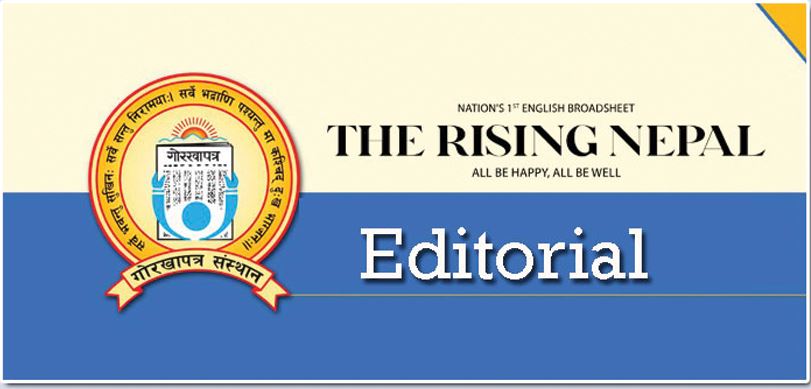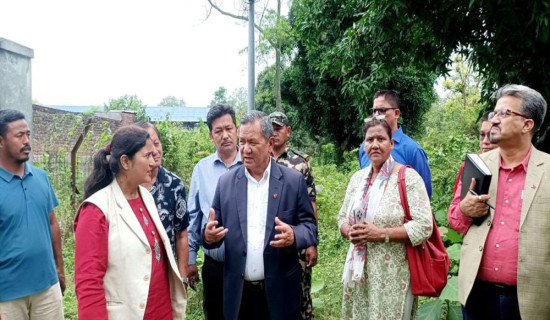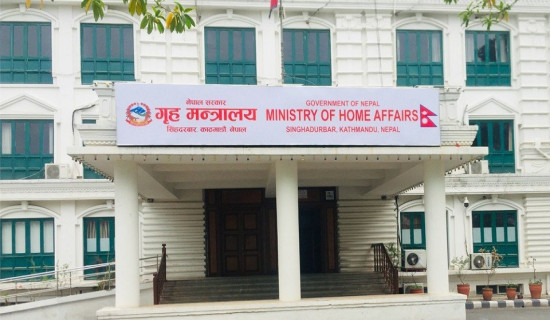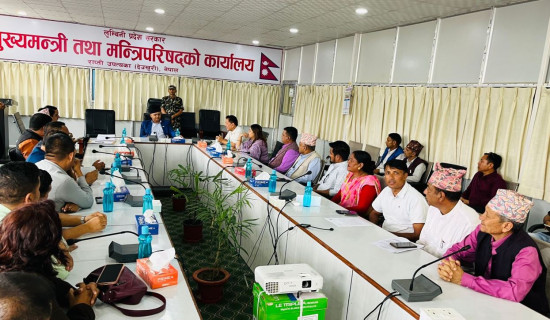- Friday, 6 June 2025
Readiness For Disaster
With the adoption of new technology, meteorologists can now predict when and where rain will fall. Precise equipment has even helped to gauge the intensity and amount of rainfall. This is indeed a big scientific feat that has saved many lives and properties. Despite this, the death toll and destruction of private and public infrastructure from natural disasters have continued to rise in the country in recent years. Last September, unprecedented floods and landslides, triggered by the torrential rain, left a trail of deaths and devastation, especially in the Kathmandu Valley and surrounding districts. Fragile geological structures, haphazard development and inadequate preparedness and response have been attributed to huge losses of lives and physical infrastructures. Meteorological science enables us to make a forecast of the weather, but not the floods and landslides. This is a reason why focus should be given to preparedness and post-disaster reconstruction to mitigate the loss and suffering of the people.
Every disaster leaves behind a lesson. The September fury exposed our vulnerabilities and inadequate response strategies. Failures serve as the guidelines for the improvement of future disaster risk reduction and management plans. The incidents of disaster grow if the warning signs are ignored or early warning messages are not widely and broadly communicated. Rescue, relief and recovery efforts are vital to save those in dire need of support. However, post-disaster reconstruction is equally important to ease the daily life of people. When the damaged roads, bridges and buildings are not constructed in time, it adds woes and miseries to the people and makes disaster response efforts difficult.
For instance, the construction of a 12-km stretch of BP Highway that was severely destroyed by floods and landslides last September has not yet begun, much to the chagrin of travellers. The highway that connects the eastern hills and Tarai with the capital city is the economic lifeline for the people using this vital route. The monsoon has already started in Nepal from May 29 but the commuters have to go through damaged and rough roads, risking their lives. With a view to reducing the calamities, the government has recently approved ‘Monsoon Preparedness and Response National Action Plan–2025’. As part of implementing it, a 12-member ‘Monsoon Response Command Post’ has been established under the Chief Executive Officer (CEO) of the National Disaster Risk Reduction and Management Authority (NDRRMA).
The command post consists of security personnel and officials from related agencies and is tasked with dealing with all disaster-related activities throughout the coming four months of the monsoon period, starting from June to September, according to a news report published in this daily. It is expected to effectively coordinate the district-level disaster management committee and local emergency operation centres (LEOC) to gather reliable data and information about the calamities and losses occurred. The government has also planned to deploy 10,085 Nepal Police officers, 7,615 personnel of the Armed Police Force Nepal and over 7,000 Nepali Army personnel for immediate rescue and relief operations, while the APF has separately mobilised around 100,000 skilled volunteers for the immediate rescue and relief works.
Inter-agency coordination is crucial for the timely response to the disaster. Multi-dimensional and holistic approaches are needed to address the challenges facing the locals. Appropriate urban planning helps protect the people in urban areas from disasters. Moreover, people should be encouraged and supported to build flood-resilient structures. The government's preparedness action plan must take these aspects into account to save people and property.





-square-thumb.jpg)


-square-thumb.jpg)








